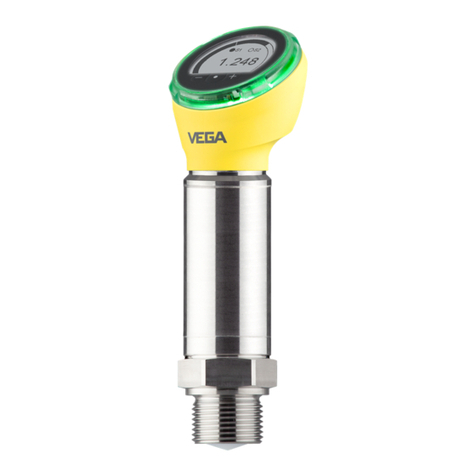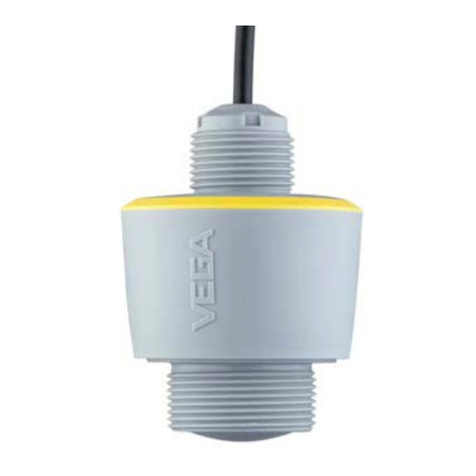Vega VEGAFLEX 86 User manual

Operating Instructions
TDR sensor for continuous level and
interface measurement of liquids
VEGAFLEX 86
Modbus
Coax probe
-20 … +250 °C
Document ID: 51519

2
Contents
VEGAFLEX 86 • Modbus
51519-EN-180508
Contents
1 About this document ............................................................................................................... 4
1.1 Function ........................................................................................................................... 4
1.2 Target group ..................................................................................................................... 4
1.3 Symbols used................................................................................................................... 4
2 For your safety ......................................................................................................................... 5
2.1 Authorised personnel ....................................................................................................... 5
2.2 Appropriate use................................................................................................................ 5
2.3 Warning about incorrect use............................................................................................. 5
2.4 General safety instructions............................................................................................... 5
2.5 EU conformity................................................................................................................... 6
2.6 NAMUR recommendations .............................................................................................. 6
2.7 Installation and operation in the USA and Canada ........................................................... 6
2.8 Environmental instructions ............................................................................................... 6
3 Product description ................................................................................................................. 7
3.1 Conguration.................................................................................................................... 7
3.2 Principle of operation........................................................................................................ 8
3.3 Packaging, transport and storage................................................................................... 10
3.4 Accessories and replacement parts ............................................................................... 11
4 Mounting................................................................................................................................. 13
4.1 General instructions ....................................................................................................... 13
4.2 Mounting instructions ..................................................................................................... 14
5 Connecting to power supply and bus system .................................................................... 17
5.1 Preparing the connection ............................................................................................... 17
5.2 Connecting..................................................................................................................... 18
5.3 Wiring plan, single chamber housing.............................................................................. 19
5.4 Set instrument address .................................................................................................. 21
5.5 Switch-on phase............................................................................................................. 22
6 Set up the sensor with the display and adjustment module ............................................. 23
6.1 Adjustment volume......................................................................................................... 23
6.2 Insert display and adjustment module............................................................................ 23
6.3 Adjustment system......................................................................................................... 24
6.4 Parameter adjustment - Quick setup .............................................................................. 25
6.5 Parameter adjustment - Extended adjustment................................................................ 25
6.6 Saving the parameterisation data................................................................................... 45
7 Setting up sensor and Modbus interface with PACTware.................................................. 46
7.1 Connect the PC.............................................................................................................. 46
7.2 Parameter adjustment with PACTware............................................................................ 46
7.3 Set instrument address .................................................................................................. 48
7.4 Set up with the quick setup............................................................................................. 48
7.5 Saving the parameterisation data................................................................................... 50
8 Diagnostics and servicing .................................................................................................... 51
8.1 Maintenance .................................................................................................................. 51
8.2 Diagnosis memory ......................................................................................................... 51
8.3 Status messages............................................................................................................ 52
8.4 Rectify faults................................................................................................................... 55

3
Contents
VEGAFLEX 86 • Modbus
51519-EN-180508
8.5 Exchanging the electronics module................................................................................ 58
8.6 Software update ............................................................................................................. 58
8.7 How to proceed if a repair is necessary.......................................................................... 59
9 Dismount................................................................................................................................. 60
9.1 Dismounting steps.......................................................................................................... 60
9.2 Disposal ......................................................................................................................... 60
10 Supplement ............................................................................................................................ 61
10.1 Technical data ................................................................................................................ 61
10.2 Basics Modbus............................................................................................................... 68
10.3 Modbus register ............................................................................................................. 71
10.4 Modbus RTU commands ............................................................................................... 73
10.5 Levelmaster commands ................................................................................................. 76
10.6 CongurationoftypicalModbushosts ........................................................................... 79
10.7 Dimensions .................................................................................................................... 82
10.8 Industrial property rights................................................................................................. 85
10.9 Trademark ...................................................................................................................... 85
Safety instructions for Ex areas
TakenoteoftheExspecicsafetyinstructionsforExapplications.
These instructions are attached as documents to each instrument
with Ex approval and are part of the operating instructions manual.
Editing status: 2018-04-24

4
1 About this document
VEGAFLEX 86 • Modbus
51519-EN-180508
1 About this document
1.1 Function
This operating instructions manual provides all the information
you need for mounting, connection and setup as well as important
instructionsformaintenance,faultrectication,theexchangeofparts
and the safety of the user. Please read this information before putting
the instrument into operation and keep this manual accessible in the
immediate vicinity of the device.
1.2 Target group
This operating instructions manual is directed to trained personnel.
Thecontentsofthismanualmustbemadeavailabletothequalied
personnel and implemented.
1.3 Symbols used
Document ID
This symbol on the front page of this instruction refers to the Docu-
ment ID. By entering the Document ID on www.vega.com you will
reach the document download.
Information, tip, note
This symbol indicates helpful additional information.
Caution: If this warning is ignored, faults or malfunctions can result.
Warning: If this warning is ignored, injury to persons and/or serious
damage to the instrument can result.
Danger: If this warning is ignored, serious injury to persons and/or
destruction of the instrument can result.
Ex applications
This symbol indicates special instructions for Ex applications.
• List
The dot set in front indicates a list with no implied sequence.
→ Action
This arrow indicates a single action.
1 Sequence of actions
Numbers set in front indicate successive steps in a procedure.
Battery disposal
This symbol indicates special information about the disposal of bat-
teries and accumulators.

5
2 For your safety
VEGAFLEX 86 • Modbus
51519-EN-180508
2 For your safety
2.1 Authorised personnel
All operations described in this documentation must be carried out
only by trained specialist personnel authorised by the plant operator.
During work on and with the device the required personal protective
equipment must always be worn.
2.2 Appropriate use
VEGAFLEX 86 is a sensor for continuous level measurement.
Youcannddetailedinformationabouttheareaofapplicationin
chapter "Product description".
Operational reliability is ensured only if the instrument is properly
usedaccordingtothespecicationsintheoperatinginstructions
manual as well as possible supplementary instructions.
2.3 Warning about incorrect use
Inappropriate or incorrect use of this product can give rise to applica-
tion-specichazards,e.g.vesseloverllthroughincorrectmounting
or adjustment. Damage to property and persons or environmental
contamination can result. Also, the protective characteristics of the
instrument can be impaired.
2.4 General safety instructions
This is a state-of-the-art instrument complying with all prevailing
regulations and directives. The instrument must only be operated in a
technicallyawlessandreliablecondition.Theoperatorisresponsi-
ble for the trouble-free operation of the instrument.When measuring
aggressive or corrosive media that can cause a dangerous situation
if the instrument malfunctions, the operator has to implement suitable
measures to make sure the instrument is functioning properly.
During the entire duration of use, the user is obliged to determine the
compliance of the necessary occupational safety measures with the
current valid rules and regulations and also take note of new regula-
tions.
The safety instructions in this operating instructions manual, the na-
tional installation standards as well as the valid safety regulations and
accident prevention rules must be observed by the user.
For safety and warranty reasons, any invasive work on the device
beyond that described in the operating instructions manual may be
carried out only by personnel authorised by the manufacturer. Arbi-
traryconversionsormodicationsareexplicitlyforbidden.Forsafety
reasons,onlytheaccessoryspeciedbythemanufacturermustbe
used.
To avoid any danger, the safety approval markings and safety tips on
the device must also be observed and their meaning looked up in this
operating instructions manual.
Other manuals for VEGAFLEX 86
15
Table of contents
Other Vega Accessories manuals
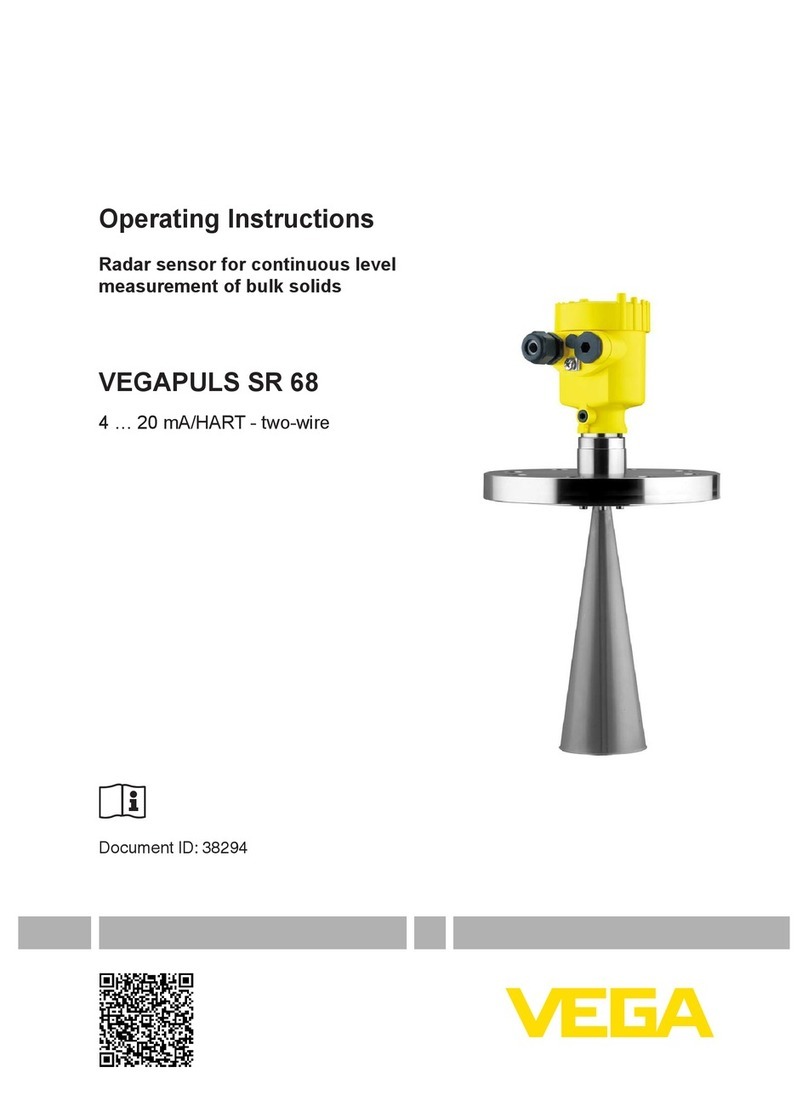
Vega
Vega vegaplus sr 68 User manual
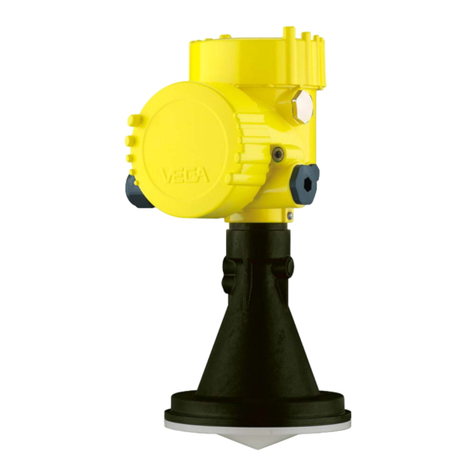
Vega
Vega VEGAPULS 61 User manual
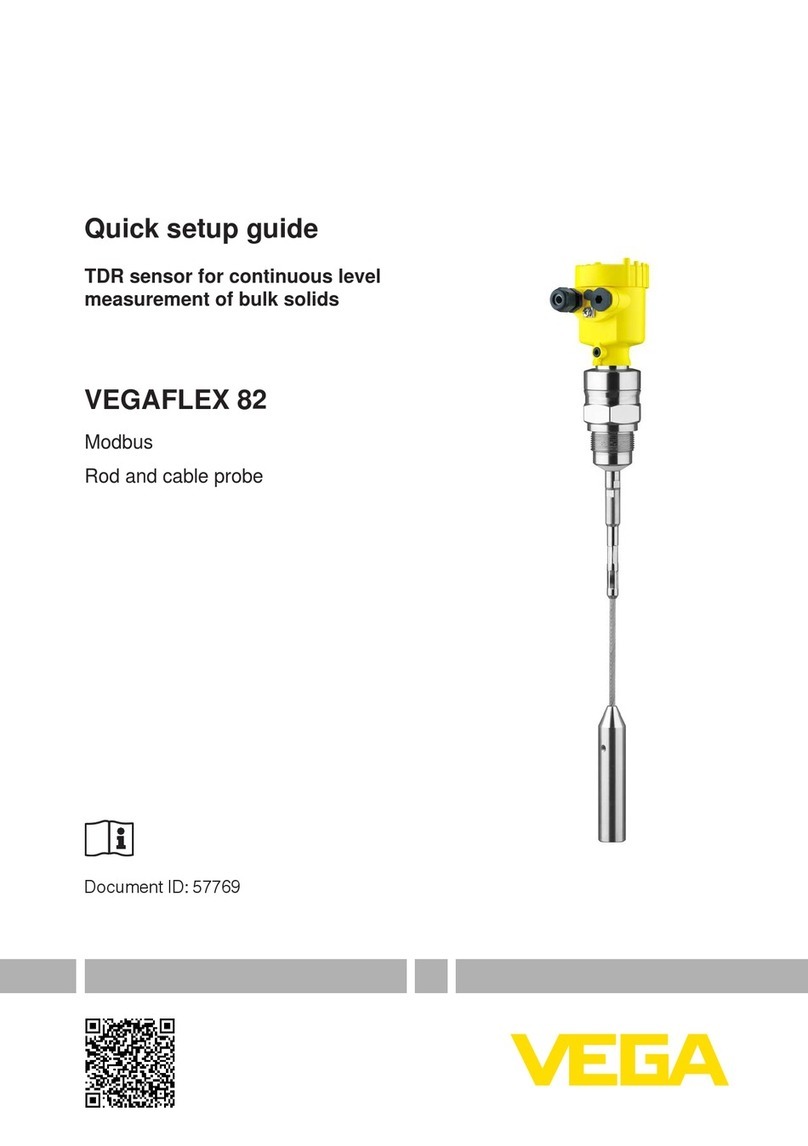
Vega
Vega VEGAFLEX 82 User manual
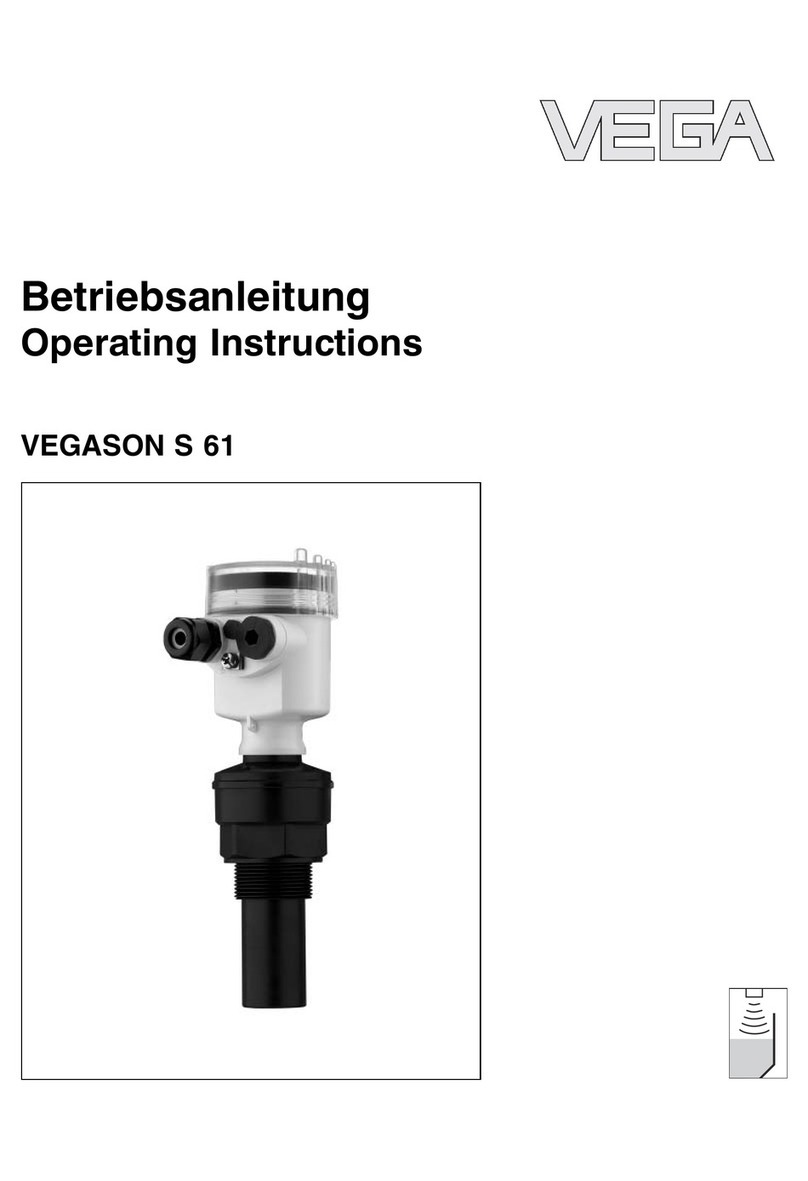
Vega
Vega VEGASON S 61 User manual

Vega
Vega VEGAPULS 66 User manual

Vega
Vega VEGABAR 82 User manual
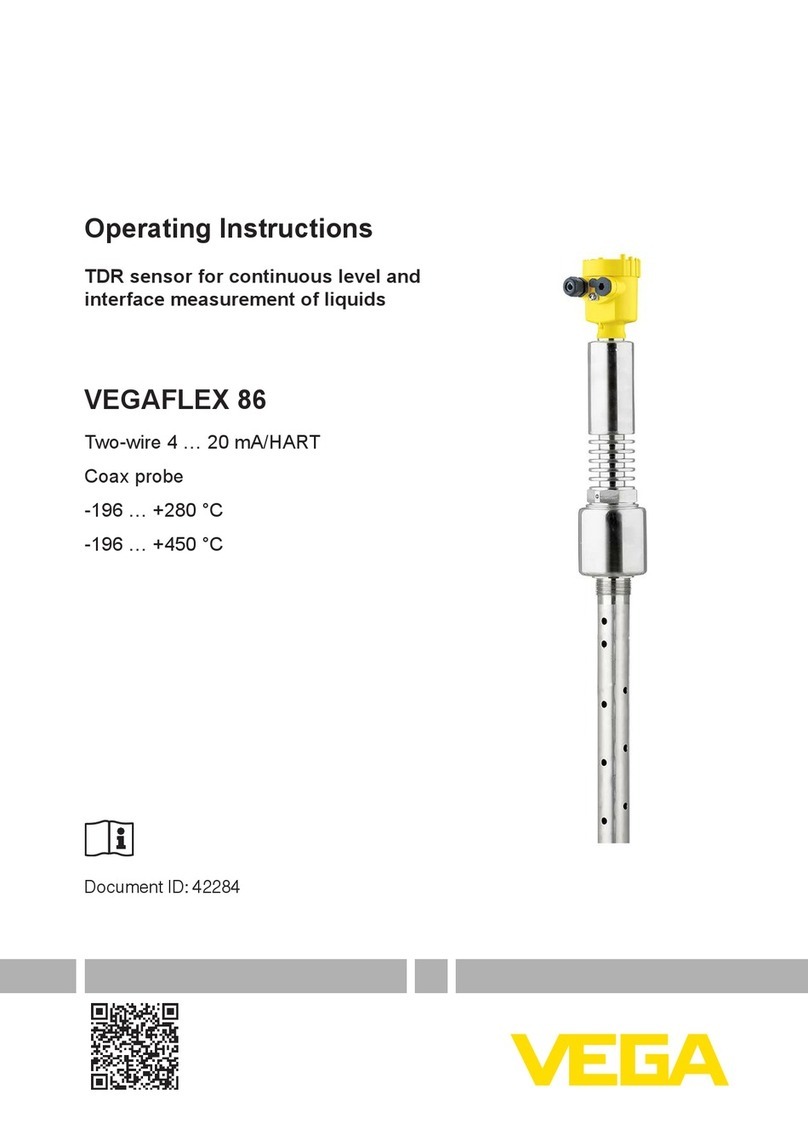
Vega
Vega VEGAFLEX 86 User manual

Vega
Vega DP-1 User manual

Vega
Vega VEGACAP 63 User manual

Vega
Vega VEGAPULS 62 User manual
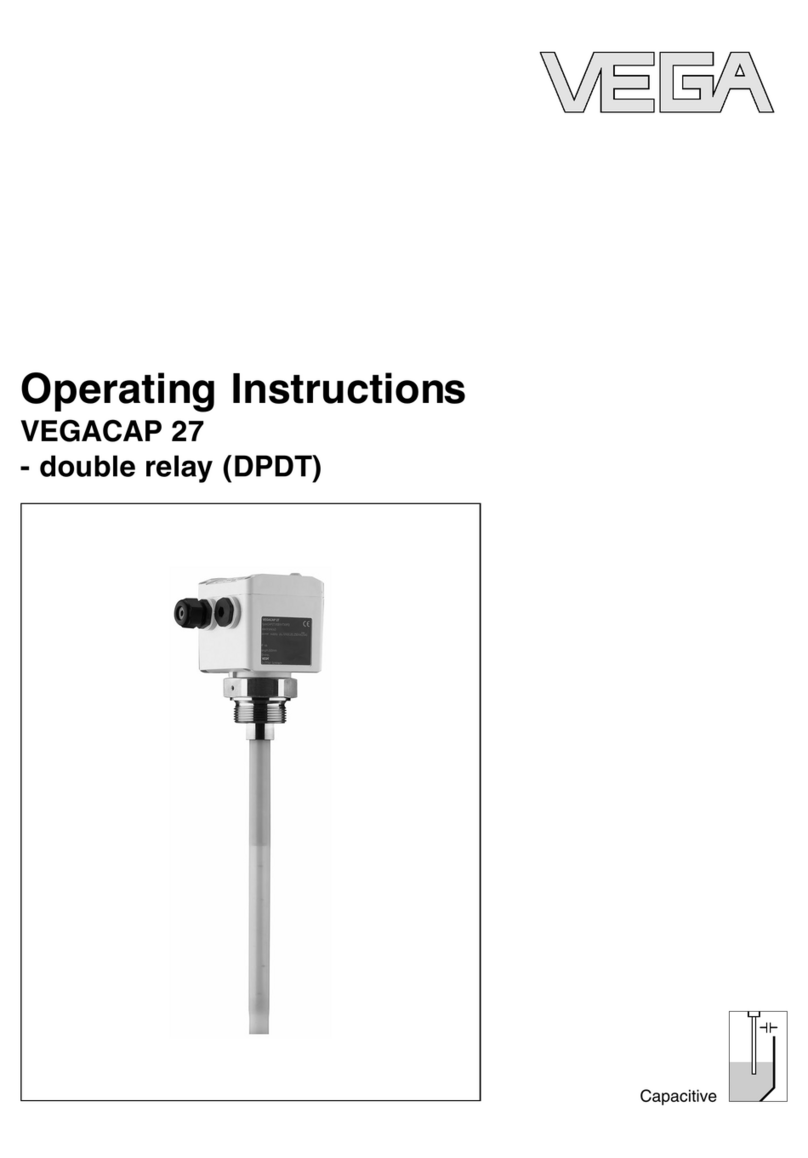
Vega
Vega VEGACAP 27 User manual
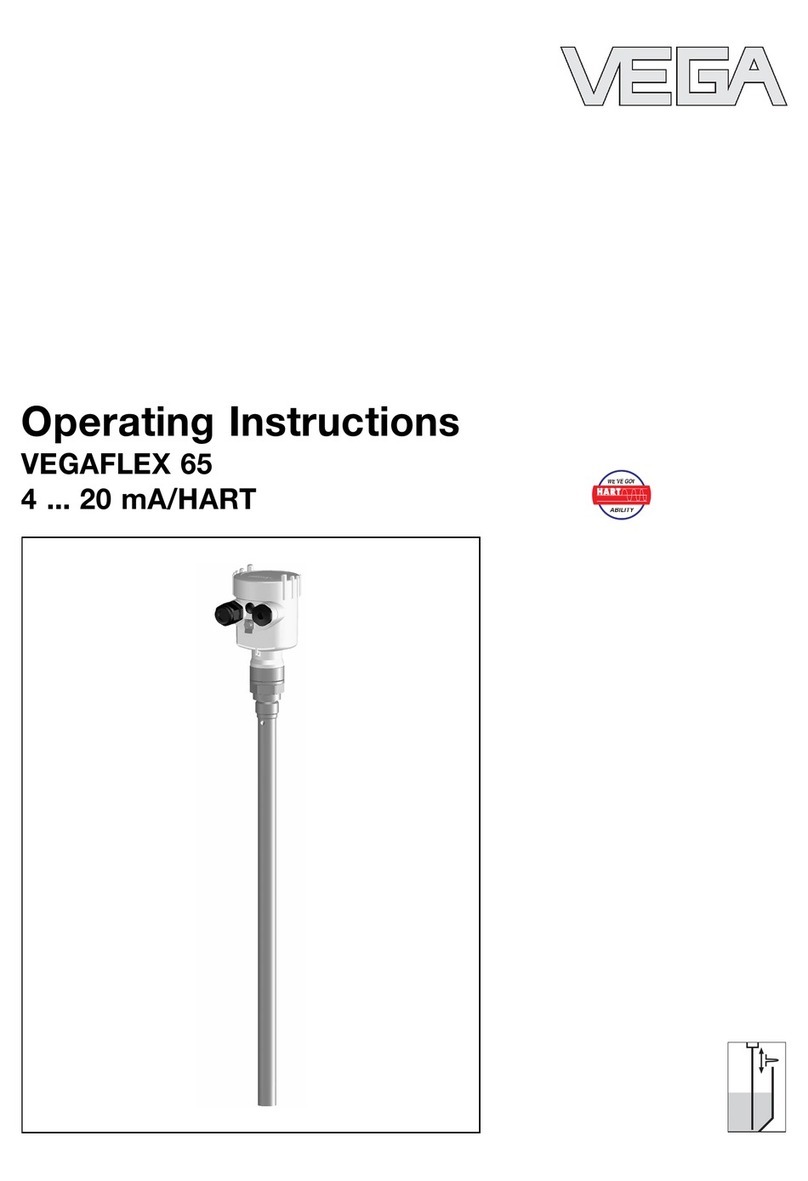
Vega
Vega VEGAFLEX 65 User manual

Vega
Vega VEGAPULS 67 User manual

Vega
Vega VEGAFLEX 86 User manual

Vega
Vega VEGAPULS 68 User manual

Vega
Vega VEGAFLEX 81 User manual
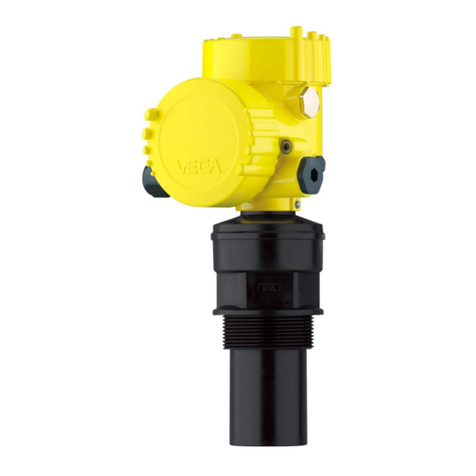
Vega
Vega VEGASON 62 User manual
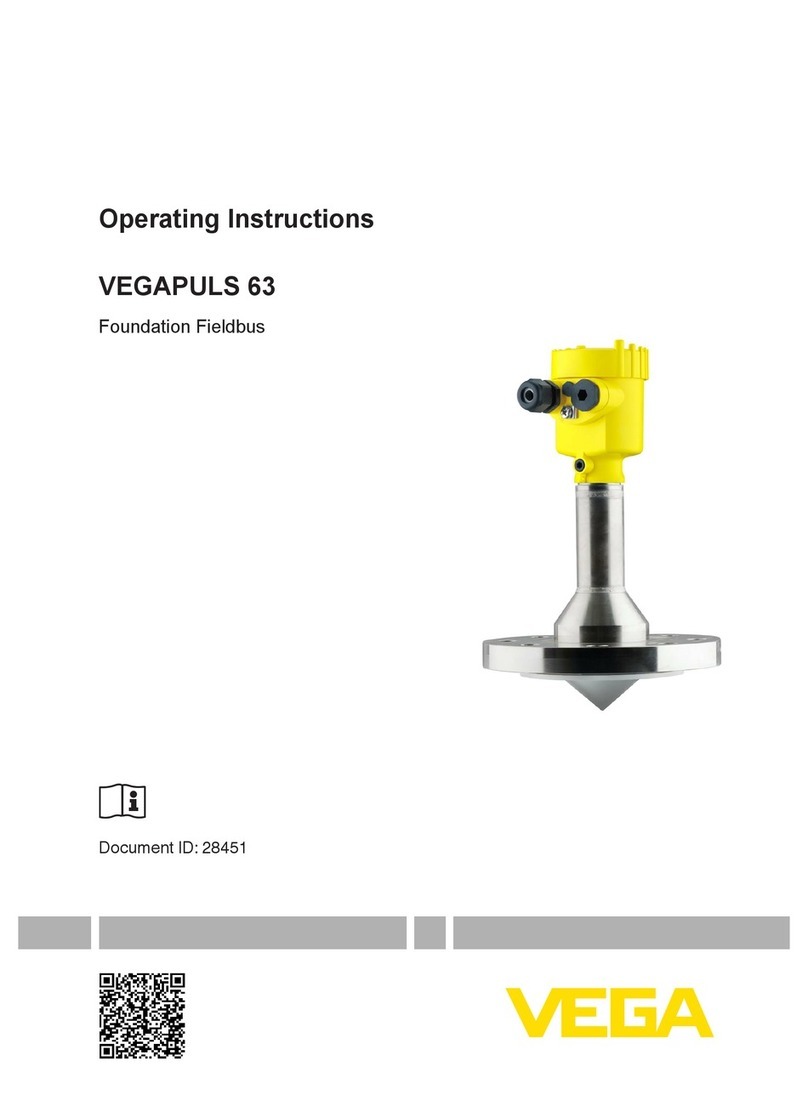
Vega
Vega VEGAPULS 63 User manual
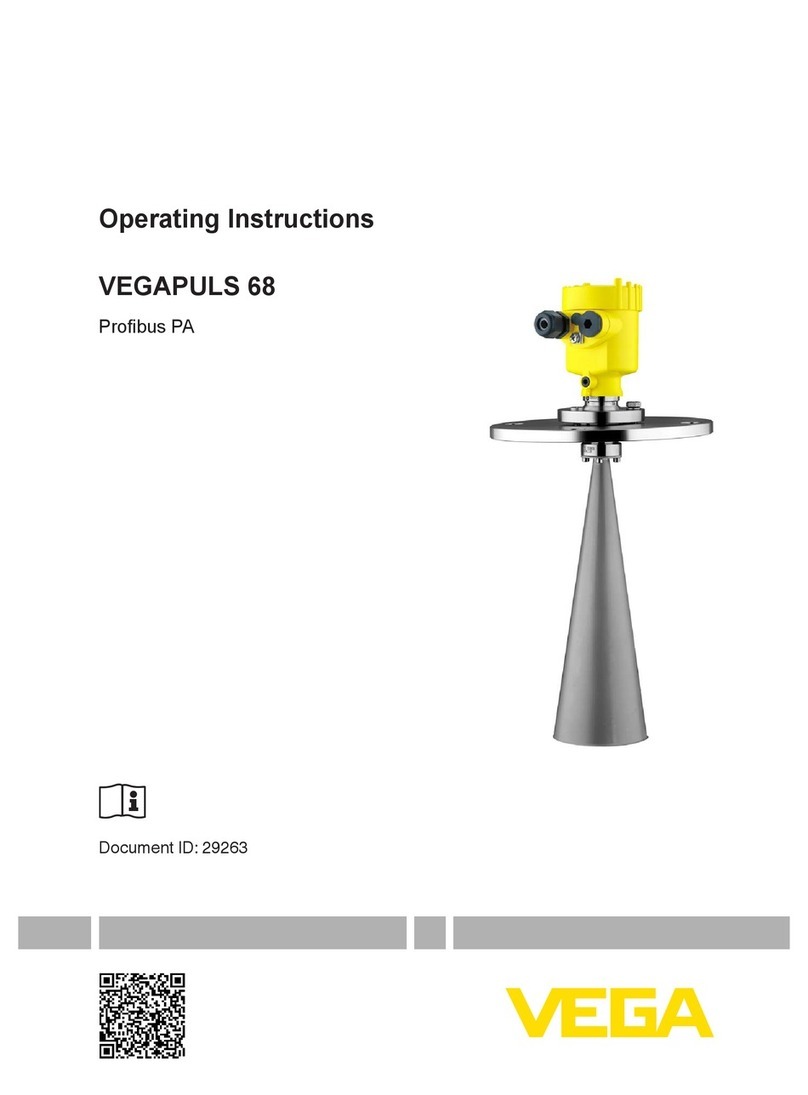
Vega
Vega VEGAPULS 68 User manual

Vega
Vega VEGAFLEX 82 User manual

